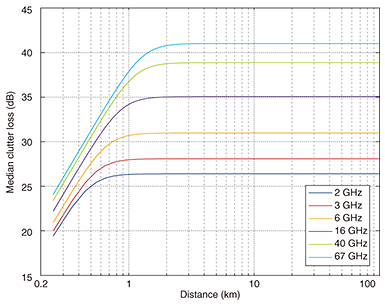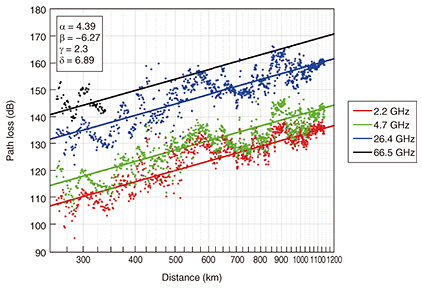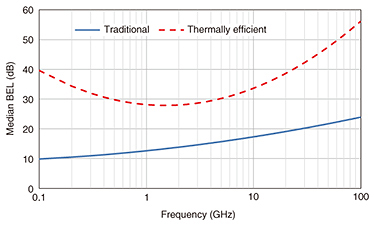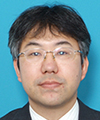 |
|||||
|
|
|||||
|
Global Standardization Activities Vol. 15, No. 9, pp. 42–48, Sept. 2017. https://doi.org/10.53829/ntr201709gls ITU-R Study Group 3 Activities towards Use of High Frequency Bands for 5G and Other Wireless Communication SystemsAbstractBefore frequencies are allocated to new wireless communication systems, it is important to investigate frequency sharing to avoid interference with existing systems. The International Telecommunication Union Radiocommunication Sector Study Group 3 (ITU-R SG 3) supports activities of other SGs by developing and maintaining recommendations for radiowave propagation characteristics and prediction models necessary for frequency sharing studies. This article introduces the activities of ITU-R SG 3 focused on the use of high frequency bands in new wireless communication systems such as the fifth-generation mobile communication system (5G). Keywords: propagation, 5G, high frequency band 1. IntroductionThis section explains the roles of the International Telecommunication Union Radiocommunication Sector Study Group 3 (ITU-R SG 3) pertaining to the fifth-generation mobile communication system (5G). 1.1 Structure and roles of ITU-R and ITU-R SG 3In discussions on frequency allocation to new wireless communication systems, it is important to study frequency sharing to avoid interference with existing systems and to achieve co-existence with such systems. The scope of ITU-R SG 3 concerns propagation of radiowaves in ionized and non-ionized media and the characteristics of radio noise for the purpose of improving radiocommunication systems, as established in Resolution ITU-R 4-7 [1]. ITU-R SG 3 supports the activities of other SGs by developing and maintaining recommendations for radiowave propagation characteristics and prediction models necessary for frequency sharing studies. The structure of the ITU-R SGs is shown in Fig. 1. The SGs are organized from SG 1 to SG 7 (except for SG 2, which does not exist). The Radio Regulations (RR) will be revised at World Radiocommunication Conferences (WRCs) based on the study results of each SG.
SG 3 supports studies underway in other SGs by providing recommendations for radio propagation characteristics. That is to say, with the results obtained by SG 3 in examining radio propagation characteristics, the other SGs conduct frequency sharing studies, and their results lead to discussions in WRCs and revision of RR. Because the results of revising the RR affect the usage of worldwide wireless communications and may also affect domestic laws such as the Radio Act, the examination of radio propagation characteristics in SG 3 is a significant activity supporting all SGs. As shown in Fig. 1, ITU-R SG 3 is composed of four Working Parties (WPs) that address issues concerning fundamental propagation such as rainfall effects and diffraction theory, ionosphere propagation, noise characteristics, terrestrial propagation, and satellite propagation. Although SG 3 deals only with radio propagation characteristics, its scope of study is diverse. 1.2 5G related discussion in ITU-R SG 3ITU-R SG 3 has addressed numerous issues, but in recent years, attention has focused primarily on topics related to 5G. In discussions on the frequency allocation for 5G in WRC-19, the candidate frequency bands for the 5G era are those from 24 GHz to 86 GHz, as set in WRC-15. To study frequency sharing with existing wireless systems, Task Group 5/1 (TG 5/1) was newly established under SG 5, which is a temporary research group whose task is to identify the frequency bands to be used for 5G [2]. SG 3 received a request to provide propagation models at the relevant frequency bands that can be used for frequency sharing studies in TG 5/1, and March 31, 2017 was set as the deadline according to the activity plan of TG 5/1. Although SG 3 meetings are generally held once a year, additional meetings were scheduled to be held after the above deadline to accelerate the development of recommendations. 2. Development of recommendations for frequency sharing studies for 5GAt the additional meeting held in March 2017, the number of contribution documents from each country, the number of participants, and the number of conference sessions increased because of the importance of this meeting. With the input of information to TG 5/1, whose deadline had been set on March 31, 2017, two main topics were discussed: the development of recommendations considered to be significant in the study of frequency sharing between 5G and existing systems, and the liaison statement to be sent to TG 5/1 that summarizes the related recommendations. In considering the frequency sharing study (interference examination) between 5G and existing systems, the participants discussed recommendations taking into account the interference with satellite stations and terrestrial stations existing in the distance, and obstruction by buildings (clutter) surrounding 5G radio stations (base stations and terminal stations). These recommendations are depicted in Fig. 2. There are six main recommendations: (i) ITU-R P.[CLUTTER]: propagation loss (attenuation of radiowaves) due to clutter, which is obstruction of radiowaves by the buildings around a radio station; (ii) ITU-R P.[BEL]: building entry loss when radiowaves enter a building (equivalent to indoor-to-outdoor path); (iii) ITU-R P.1411: outdoor short range propagation characteristics (up to 1 km) assuming both the transmitting and receiving stations are located in nearby buildings; (iv) ITU-R P. 1238: indoor propagation characteristics assuming the case when both the transmitting and receiving stations are present in the same building; (v) ITU-R P.619: propagation characteristics between a terrestrial station and a space station; and (vi) ITU-R P.452: propagation models for predicting propagation loss between terrestrial stations.
The recommendations in (ii)–(iv) are thought to be useful for the situations where both the transmitting and receiving stations are surrounded by buildings, defined as clutter in (i). The development of recommendations (i) and (ii) progressed significantly at this meeting and were approved as new recommendations. Additionally, recommendations (iii) and (iv) were revised to cover as wide a frequency range as possible up to the 86-GHz band, which is the highest candidate frequency band for the 5G era, and the revisions were approved. There were no major revisions for (v) and (vi) from the existing recommendations. Finally, the liaison statement summarizing the details of these recommendations was approved for provision to TG 5/1. In this article, we outline the new ITU-R Recommendations (i) ITU-R P.[CLUTTER] and (ii) ITU-R P.[BEL], which were regarded as particularly important in this meeting. 2.1 New Recommendation ITU-R P.[CLUTTER]Several ITU-R Recommendations on terrestrial radio propagation describe prediction methods that incorporate the type of propagation loss called clutter loss. Clutter loss is propagation loss caused by reflection or scattering due to terrain profiles including the presence of buildings around the antennas, as shown in Fig. 3. Clutter loss is a factor in many recommendations that address long range propagation such as ITU-R P.452. To evaluate the interference between other systems, it is necessary to consider radio stations in the distance. Therefore, it is important to utilize a prediction method that incorporates clutter loss in long range propagation. However, since the prediction methods that use clutter loss have been utilized with relatively low frequency bands such as the VHF/UHF (very high frequency and ultrahigh frequency) bands, it was unclear whether it could be expanded to the high frequency band. Therefore, it was decided to study expansion into a high frequency band and to summarize the prediction methods using clutter loss as a new Recommendation ITU-R P. [CLUTTER].
An example of clutter loss calculation in the new recommendation is shown in Fig. 4. The graph shows the median values of clutter loss (Y-axis) at each frequency with respect to the distance between the transmitter and receiver (X-axis); the calculation example is assumed for clutter loss between terrestrial stations. It is clear that in a short distance, the clutter losses decrease because the incident angle for the obstructing buildings becomes small. As the distance becomes longer, the incident angle can be considered constant, so the clutter losses are also a fixed value.
Such variation with respect to distance is based on the measurement results in an urban area, which were obtained by NTT Access Network Service Systems Laboratories (Fig. 5). The X-axis represents the path loss (propagation loss) values at each frequency, and the Y-axis is the distance between transceivers. Incidentally, the measurement results of multiple frequencies, including the high frequency bands up to 66.5 GHz and long distances up to 1 km, are a significant contribution and are the only data without reporting examples from other countries. The measurement results in Fig. 5 are also reflected in Recommendation ITU-R P.1411 (outdoor short range propagation) shown in Fig. 2, and reliable prediction formulas based on the measurements have been adopted for each recommendation.
2.2 New Recommendation ITU-R P.[BEL]Building entry loss (BEL) is propagation loss that occurs when radiowaves enter from outside a building into the building (and also can be applied to inside-to-outside). SG 3 has been studying BEL for quite some time. Although the definition and the examples of measurement results have been summarized in ITU-R P.2040 (effects of building materials and structures) and ITU-R P.2346 (measurement data of BEL), the prediction methods (propagation models) had not yet been defined. Therefore, the urgent development of such a model was the goal of this meeting. As a result, a prediction formula was summarized that considers the incident angle in the horizontal and vertical direction with respect to the building and that assumes interference with radio stations in space. BEL characteristics are greatly affected by the type of building material. For example, in modern buildings, the losses increase when windows have high thermal insulation properties. Therefore, the type of building was also taken into consideration in developing a propagation model. An example of the BEL calculation results used in the new Recommendation ITU-R P.[BEL] is shown in Fig. 6. It shows the median values of BEL for two types of buildings (Y-axis) with respect to the frequency (X-axis). It can be seen that the loss characteristics differ greatly depending on the type of building (traditional or thermally efficient). Also, as the horizontal axis shows, the BEL values can be obtained for a wide frequency range up to 100 GHz. As with the case using clutter loss, this prediction formula was developed based on a large number of measurement results including measurement results in multiple frequency bands performed by NTT Access Network Service Systems Laboratories. The reliable results based on the measurements were adopted in the recommendation.
3. Future overviewITU-R SG 3 studies various propagation characteristics, but the recent examinations of propagation characteristics were done mainly as part of the frequency sharing studies of candidate frequency bands for the 5G era carried out in TG 5/1. The authors contributed documents based on measurement data on a wide range of environments with multiple frequencies, including high frequency bands, and contributed to developing reliable recommendations. In addition, the authors’ participation in various groups was key in promoting discussions on these topics. Dr. Wataru Yamada served as Vice-Chairperson of WP 3K and Chairman of SWG (Sub-Working Group) 3K-3, and Dr. Motoharu Sasaki served as Chairperson of DG (Drafting Group) 3K3B. To accelerate the development of various radio communication systems, including 5G, in the future, we intend to actively engage in the modeling of propagation phenomena and continue contributing to ITU-R SG 3 activities. References
|
|||||










